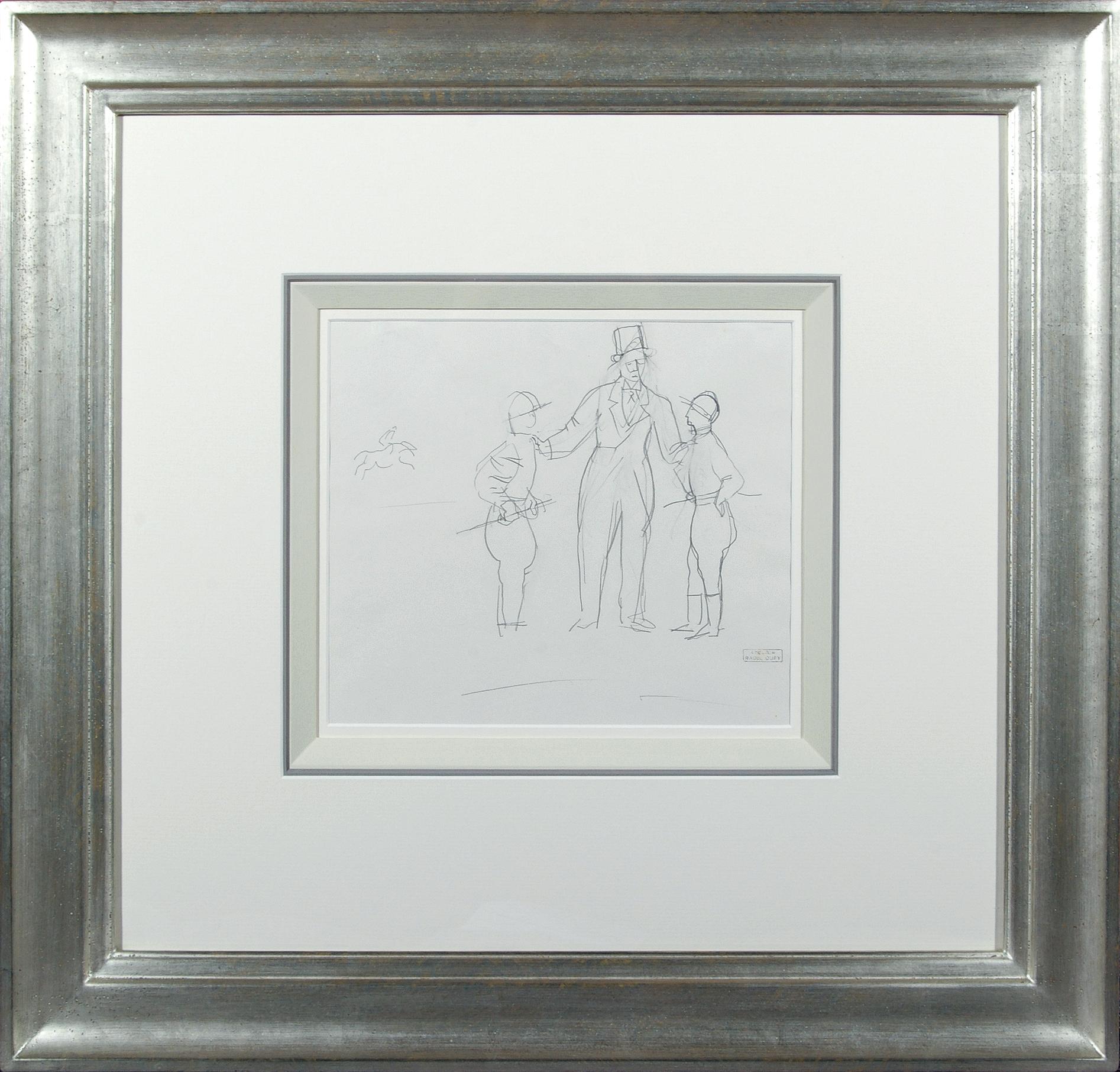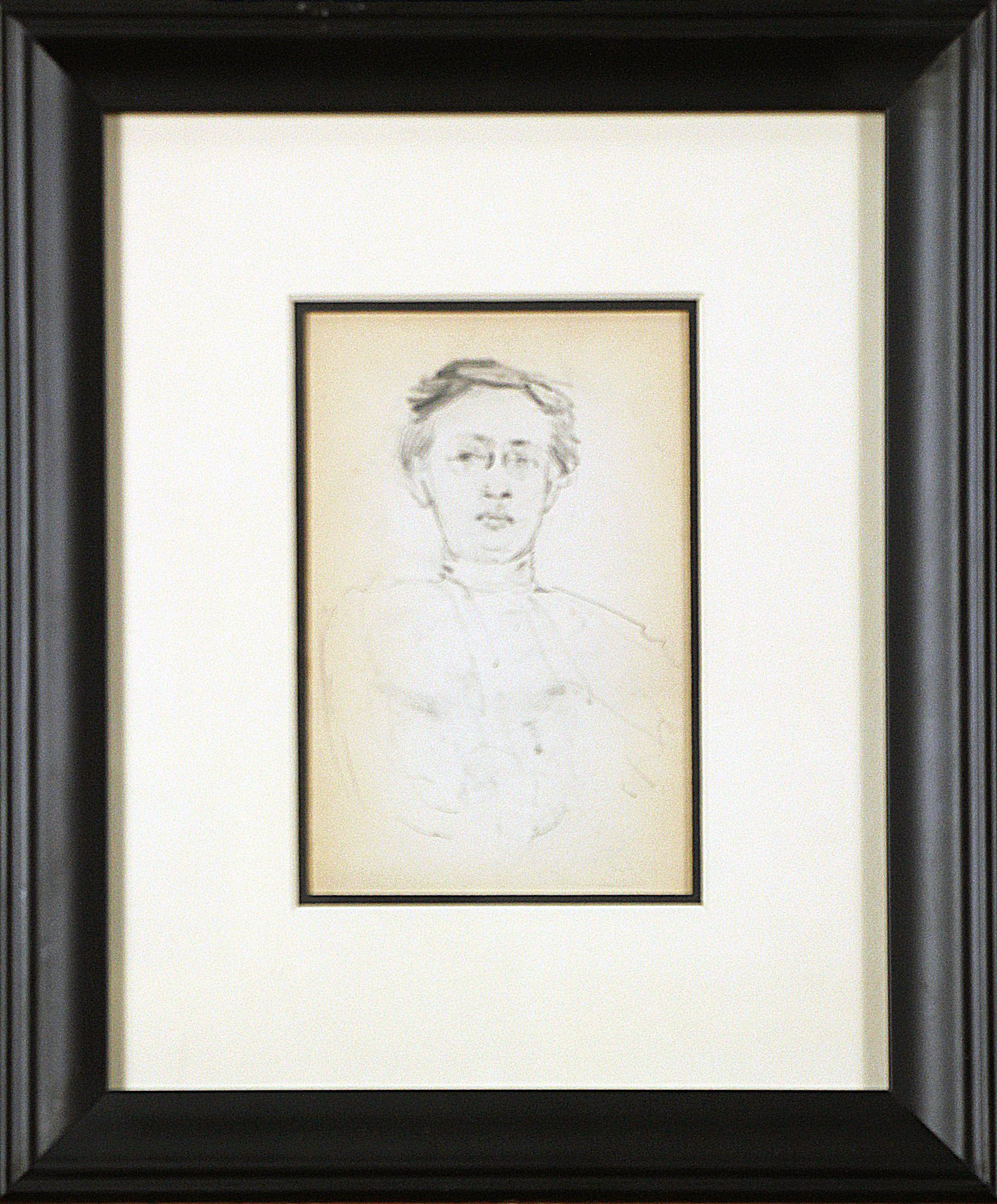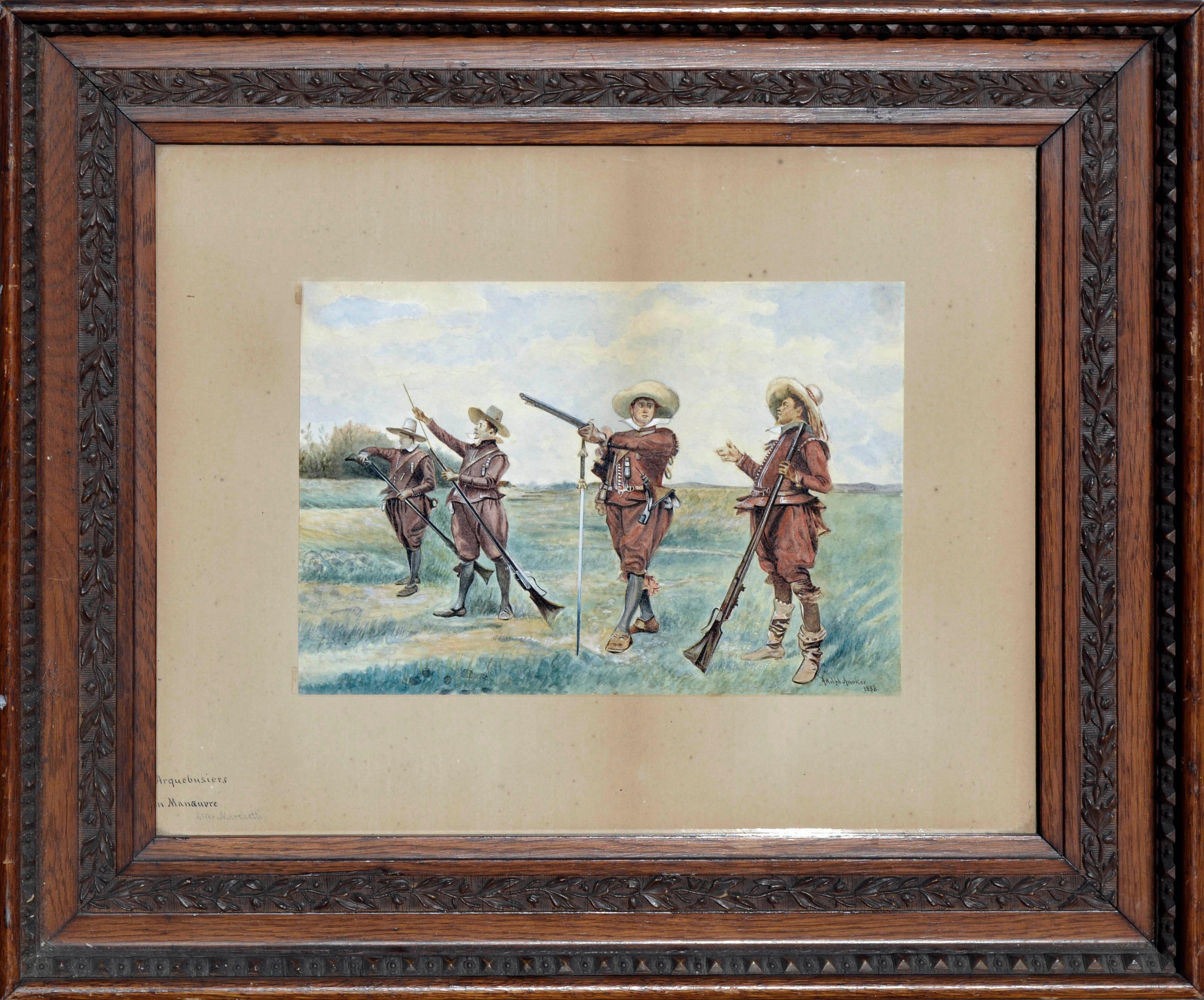Camille PissarroÉtudes d'après nature by Camille Pissarro - Work on paper
About the Item
- Creator:Camille Pissarro (1831-1903, French)
- Dimensions:Height: 8.67 in (22 cm)Width: 11.66 in (29.6 cm)
- Medium:
- Movement & Style:
- Period:
- Condition:
- Gallery Location:London, GB
- Reference Number:1stDibs: LU261212725072
Camille Pissarro
Camille Pissarro was one of the most influential members of the French Impressionist movement and the only artist to participate in all eight Impressionist exhibitions.
Born in July of 1830 on the island of Saint Thomas in the Danish West Indies, Camille was the son of Frédéric and Rachel Pissarro. At the age of 12, he went to school in Paris, where he displayed a penchant for drawing. He returned again to Paris in 1855, having convinced his parents to allow him to pursue a career as an artist rather than work in the family import/export business. Camille studied at the Académie Suisse alongside Claude Monet, and, during this time, he met Paul Cézanne, Édouard Manet and Pierre-Auguste Renoir.
In 1869, Camille settled in Louveciennes. The outbreak of the Franco-Prussian War in 1870 prompted him to move to England, and, with Monet, Camille painted a series of landscapes around Norwood and Crystal Palace, while studying English landscape painting in the museums. Upon returning a year later at the end of the War to Louveciennes, Camille discovered that only 40 of his 1,500 paintings — almost 20 years’ work — remained undamaged.
Camille settled in Pontoise in the summer of 1871, remaining there and gathering a close circle of friends around him for the next 10 years. He reestablished relationships with Cézanne, Manet, Monet, Renoir and Edgar Degas, expressing his desire to create an alternative to the Salon, so that their group could display their own unique styles. Camille married Julie Vellay, with whom he would have seven children. Cézanne repeatedly came to stay with them, and, under Camille’s influence, he learned to study nature more patiently, even copying one of Camille’s landscapes in order to learn his teacher’s technique.
The first Impressionist group exhibition, initiated by Monet in 1874, earned the Impressionists much criticism for their art. While mainly interested in landscape, Camille introduced people — generally, peasants going about their rural occupations — and animals into his works, and they often became the focal point of the composition. It was this unsentimental and realistic approach, with the complete absence of any pretense, which seemed to stop his work from finding appreciation in the general public.
One of the few collectors who did show interest in Camille’s work was a bank employee named Paul Gauguin, who, after acquiring a small collection of Impressionist works, turned to Camille for advice on becoming a painter himself. For several years, Gauguin closely followed his mentor, and, although their friendship was fraught with disagreement and misunderstandings, Gauguin still wrote shortly before Camille’s death in 1906: “He was one of my masters, and I do not deny him.”
In the 1880s, Camille moved from Pontoise to nearby Osny, before Eragny, a small village much further from Paris. At a time when he was dissatisfied with his work, in 1885, Camille met both Paul Signac and Georges Seurat. He was fascinated by their efforts to replace the intuitive perceptive approach of the Impressionists with a “Divisionist” method, or scientific study of nature’s phenomena based on optical laws. Despite having reached his mid-50s, Camille did not hesitate to follow the two young innovators. The following year, he passed on this new concept to Vincent Van Gogh, who had just arrived in Paris and was keen to learn of the most recent developments in art. However, after a few years, Camille felt restricted by Seurat’s theories and returned to his more spontaneous technique while retaining the lightness and purity of color acquired during his Divisionist phase.
In the last years of his life, Camille divided his time between Paris, Rouen, Le Havre and Eragny, painting several series of different aspects of these cities, with varying light and weather effects. Many of these paintings are considered among his best and make for an apt finale to his long and prodigious career.
When Camille Pissarro died in the autumn of 1903, he had finally started to gain public recognition. Today his work can be found in many of the most important museums and collections throughout the world.
Find original Camille Pissarro art on 1stDibs.
(Biography provided by Stern Pissarro Gallery)
- ShippingRetrieving quote...Ships From: London, United Kingdom
- Return PolicyA return for this item may be initiated within 7 days of delivery.
- La Seine à Paris by Georges Manzana Pissarro - Work on Paper, Paris sceneBy Georges Henri Manzana PissarroLocated in London, GB*UK BUYERS WILL PAY AN ADDITIONAL 20% VAT ON TOP OF THE ABOVE PRICE La Seine à Paris by Georges Manzana Pissarro (1871-1961) Pencil on paper 22.5 x 28.3 cm (8 ⁷/₈ x 11 ¹/₈ inches) S...Category
1930s Impressionist Figurative Drawings and Watercolors
MaterialsPaper, Pencil
- Le Ramassage des Foins by Paulémile Pissarro - Graphite drawingBy Paul Emile PissarroLocated in London, GB*UK BUYERS WILL PAY AN ADDITIONAL 20% VAT ON TOP OF THE ABOVE PRICE Le Ramassage des Foins by Paulémile Pissarro (1884-1972) Graphite on paper 12.9 x 20 cm (5 ¹/₈ x 7 ⁷/₈ inches) Si...Category
Mid-20th Century Impressionist Figurative Drawings and Watercolors
MaterialsGraphite, Paper
- La Maison, Normandie by Paulémile Pissarro - Drawing of a countryside houseBy Paul Emile PissarroLocated in London, GBLa Maison, Normandie by Paulémile Pissarro (1884-1972) Pencil on paper 24 x 32 cm (9 ¹/₂ x 12 ⁵/₈ inches) Signed lower left, Paulémile- Pissarro This work is accompanied by a certif...Category
1940s Impressionist Figurative Drawings and Watercolors
MaterialsPencil, Paper
- Cantepie, Normandy by Paulémile Pissarro - DrawingBy Paul Emile PissarroLocated in London, GBCantepie, Normandy by Paulémile Pissarro (1884-1972) Pencil on paper 21 x 27 cm (8 ¹/₄ x 10 ⁵/₈ inches) Signed lower right, Paulémile- Pissarro. This work is accompanied by a certif...Category
20th Century Impressionist Figurative Drawings and Watercolors
MaterialsPaper, Pencil
- Regent's Park, London by Camille Pissarro - Watercolour on paperBy Camille PissarroLocated in London, GBRegent's Park, London by Camille Pissarro (1830-1903) Watercolour on paper 16.5 x 24.5 cm (6 ¹/₂ x 9 ⁵/₈ inches) Inscribed, signed and dated lower left, C.Pissarro 1890 Camille Piss...Category
1890s Impressionist Figurative Drawings and Watercolors
MaterialsPaper, Watercolor
- Paysage de l'Aven by Ludovic-Rodo Pissarro - Watercolour, Coastal sceneBy Ludovic-Rodo PissarroLocated in London, GB*UK BUYERS WILL PAY AN ADDITIONAL 20% VAT ON TOP OF THE ABOVE PRICE Paysage de l'Aven by Ludovic-Rodo Pissarro (1878-1952) Watercolour and pencil on paper 27 x 38 cm (10 ⅝ x 15 inc...Category
Early 1900s Post-Impressionist Landscape Drawings and Watercolors
MaterialsPaper, Watercolor, Pencil
- Turfistes et JockeysBy Raoul DufyLocated in Belgravia, London, LondonPencil on paper Paper size: 8 x 10.5 inches Stamped with the artist’s atelier stamp ‘ATELIER/RAOUL DUFY’ lower right Provenance: Galerie Fanny Guillon-Laffaille, Paris. Neffe-Dega...Category
20th Century Impressionist Figurative Drawings and Watercolors
MaterialsPaper, Pencil
- Two Portraits, American Impressionist, Double Sided Drawings on Paper, 1899By Henry Bayley SnellLocated in Doylestown, PA"Mrs. Snell/Figure (reverse)" are two pencil drawings on paper by Henry Snell (New Hope, Pennsylvania / Gloucester, Massachusetts 1858 - 1943). Each drawing measures 5 3/4 x 3 3/4 inches and is conservation framed and matted in black, wood frames, and put behind glass. These drawings come from an original sketchbook...Category
1890s American Impressionist Figurative Drawings and Watercolors
MaterialsPaper, Pencil
- "Arquebusiers En Manoeuvre", After MarchettiLocated in Soquel, CAFigurative landscape of four infantrymen in formation with their long arquebus guns by Adolphe Ancker (Dutch, 19th Century), after Marchetti. Signed and dated "Adolph Ancker 1888" lo...Category
1880s American Impressionist Figurative Drawings and Watercolors
MaterialsWatercolor, Paper, Pencil
- Figure Study For 'Science'By John Singer SargentLocated in New York, NYImage dimensions: 24 ½ x 18 ¾ inches Framed dimensions: 34 x 28 inches This charcoal drawing is a preliminary study for the figure of Science, the subject that comprises the far ri...Category
1920s American Impressionist Figurative Drawings and Watercolors
MaterialsPaper, Charcoal, Graphite
- The Royal Palace, Monte Carlo, Monaco.By Hercules Brabazon BrabazonLocated in Cotignac, FRMid 19th century pastel drawing view of the Royal Palace, Monte Carlo, Monaco by British artist Hercules Brabazon Brabazon. The work is titl...Category
Mid-19th Century Impressionist Landscape Drawings and Watercolors
MaterialsPastel, Pencil, Paper
- Composition with figures. 1968. Paper, pencil, 35x24.5 cmBy Vladimir GlushenkovLocated in Riga, LVComposition with figures. 1968. Paper, pencil, 35x24.5 cm Vladimir Borisovich Glushenkov (May 21, 1948, Riga - December 26, 2009, Riga.) - painter, graphic artist, poet, translator. Born in Riga in a Russian-Polish-German family. Vladimir Glushenkov...Category
1960s Impressionist Figurative Drawings and Watercolors
MaterialsPaper, Pencil





